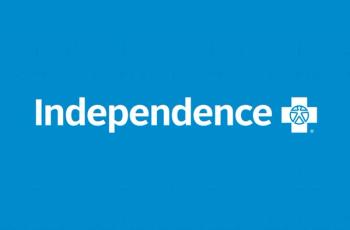
Remote monitoring of diabetics: Applications and reimbursement
Here’s how remote monitoring works to improve diabetic patient care, and a look at whether payers are paying for it.
Remote monitoring can be used to obtain information about a diabetic patient’s blood sugar levels, symptoms, diet, and medication adherence on a daily basis. “Patients can get fairly immediate short-term results that can help them to prevent problems such as a hypoglycemic episode,” says Philip Painter, MD, chief medical officer of the Humana At Home program. “Long term, if remote monitoring leads to changes in a member’s behavior, it may help to prevent serious issues like blindness, stroke, and chronic kidney disease.”
How it works
Remote monitoring can be done with a blood glucose meter that transmits individual self-monitored blood glucose values or with a continuous glucose monitoring (CGM) device that reads interstitial fluid glucose measurements every five minutes.
Remote monitoring works in two ways-by gathering data that the patient can use to make positive changes or by notifying someone who is monitoring the data that action is needed, Painter says.
“A care manager can review the readings on a dashboard and ask a patient to change their medication regimen or advise them on lifestyle changes to improve their control,” says Athena Philis-Tsimikas, MD, corporate vice president, Scripps Whittier Diabetes Institute, San Diego.
The monitors usually transmit blood glucose values via Bluetooth to a smartphone that then transmits them to a secure cloud. The cloud can be accessed by others who are given permission by the transmitting patient. In some cases the values from the cloud can be transmitted back to the “share” community in real time so immediate tracking and intervention can be done, explains Philis-Tsimikas, who has designed diabetes programs for member centers of Health Center Partners, a consortium of primary care organizations in southern California.
Despite these benefits, some patients struggle with using the technology-such as those who are technologically-challenged, or those who have underlying conditions such as arthritis or visual problems. “That’s problematic, because in many cases the devices rely on the patient’s proactive participation,” Painter says. On the provider’s end, there can be an enormous amount of data to sift through to find abnormalities, filter urgent needs, and turn it into actionable data.
Furthermore, technology connections can be dependent upon good Bluetooth and cellular connections, which have a cost associated with them.
Are payers paying?
At Humana, based in Louisville, Kentucky, remote monitoring for people with chronic health conditions, such as diabetes, is done through its Humana At Home care management services. Members do not incur an additional cost for using the service.
Philis-Tsimikas says CGM monitors are usually covered by payers for people with type 1 diabetes, although Medicare does not cover them at this time. Some payers will cover meters that use remote monitoring technology.
Further applications
While glucose monitoring can benefit diabetic patients, they can also reap advantages from other types of remote monitoring, such as devices that measure circulation in the feet to detect risk for foot ulcers or measure weight or blood pressure (all of which are currently available). “Most diabetic patients have either several comorbid conditions or end-organ damage,” Painter says. For example, monitoring for foot ulcers or for falls could help prevent more serious health conditions.
Philis-Tsimikas would like to see a more integrated approach to managing patients with diabetes by care managers within primary care and diabetes specialty departments. “If data is streaming in and stratified to have the situations needing immediate attention rise to the top, then care managers can use guiding algorithms and order sets to more quickly address and correct concerns,” she says. “Physicians would be available to back up the care managers when more complex questions present themselves.”
Consequently, more immediate care could be provided to individuals with highest needs. Those with lower urgency would still get attention, but might be provided education and support by other team members.
Karen Appold is a medical writer in Lehigh Valley, Pennsylvania.
Newsletter
Get the latest industry news, event updates, and more from Managed healthcare Executive.






















































